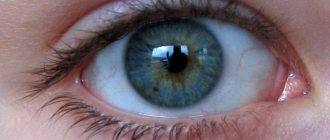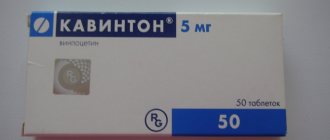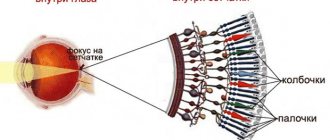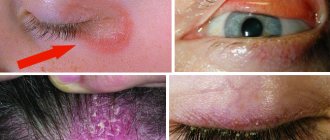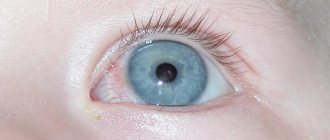- Causes of high blood pressure
- Idiopathic form of the disease
- Symptoms
- Manifestations of liquor-hypertensive syndrome in children
- Diagnostics
- Treatment of intracranial pressure
- Drug treatment
Intracranial pressure is otherwise called intracranial pressure.
An increase in intracranial pressure is called intracranial hypertension, which is characterized by a moderate or pronounced clinical picture. This pathology is also known under the names “cerebrospinal fluid hypertension syndrome”, “cerebrospinal fluid hypertension syndrome”. The term “cerebrospinal fluid” refers to cerebrospinal fluid. The disease can occur in an acute form and become chronic. Acute most often occurs against the background of traumatic brain injury (TBI), back injuries and infectious lesions of the brain. Chronically elevated intracranial pressure is observed in patients with brain tumors and cysts, and symptoms increase as the tumor enlarges. The pathology persists after severe surgical interventions, injuries to the spinal cord and brain, inflammatory processes that led to disturbances in liquorodynamics - the circulation of cerebrospinal fluid.
Intracranial pressure is reduced mainly by medicinal methods; surgical intervention is used only in particularly difficult cases.
Causes of high blood pressure
The disease occurs in adults and children. Its causes can be congenital or acquired. They are conventionally divided into four groups:
- Volumetric formations.
This category includes brain tumors, cysts, abscesses, and vascular aneurysms. The tumor takes up space in the skull, compresses certain areas of the brain, and displaces its structures. This leads to a change in intracranial pressure. In young children, intracranial pressure higher than normal may be due to congenital developmental anomalies. Most often, specialists diagnose microcephaly or hydrocephalus. Trauma during childbirth, asphyxia, and oxygen starvation of the fetus can lead to pathology. At risk are babies born prematurely. - Edema.
Characteristic in the development of a number of diseases: encephalitis, meningitis, arachnoiditis, ischemic stroke, as a result of head injury, intoxication, hypoxia. Edema can be local, that is, affecting individual areas of the brain, or diffuse. - Increased blood supply inside the skull.
This pathology occurs with dyscirculatory encephalopathy and a number of other diseases. In this case, the blood flow increases or its outflow from the vessels supplying the brain becomes more difficult. Due to increased blood supply, blood pressure rises. - Disorders of cerebrospinal fluid dynamics.
In the human body, the brain is surrounded by cerebrospinal fluid (CSF), which moves at a certain speed and affects brain tissue, thereby creating intracranial pressure. Part of the cerebrospinal fluid enters the blood, and the missing amount of fluid is produced to replace this volume. Thanks to this, constant pressure is achieved, which is considered normal. Infectious and inflammatory diseases, back and head injuries lead to various disorders of the secretion and circulation of cerebrospinal fluid. In this case, the absorption of cerebrospinal fluid becomes slow or its production is excessively activated. Liquorodynamic disorders can develop against the background of congenital anomalies in the structure of the spinal cord and brain. Intracranial dystension occurs, in which the pressure on the brain becomes uneven. Excessive accumulation of fluid in the cranium causes compression of individual areas and vessels, which leads to changes in intracranial pressure.
In addition to injuries and inflammation, disruption of the production and circulation of cerebrospinal fluid can cause treatment with potent drugs. At risk are patients who are forced to take hormonal drugs, antibiotics, and corticosteroids for a long time. Excessive amounts of vitamin A due to abuse of retinol preparations can lead to changes in intracranial pressure.
Symptoms
You can suspect a problem based on the following signs:
- headache;
- nausea and vomiting in the absence of gastrointestinal diseases;
- increased fatigue;
- irritability;
- changes in blood pressure, pulse rate;
- decreased libido.
Headache is the main symptom of liquor-hypertensive syndrome. Patients note the dependence of pain on body position and time of day. For many people, headaches begin to hurt more severely in the evening and at night, when a person is in a lying or reclining position. In this case, the production of cerebrospinal fluid increases, and its outflow worsens, which increases compression.
There is a feeling of fullness, pressure from the inside, which is localized in the fronto-parietal areas. The patient complains of a feeling as if something is pressing on the eyes from the inside, and blurred vision occurs. This feeling intensifies when the eyeballs move. When examining the fundus, the doctor will note swelling of the optic nerve - one of the main signs of increased intracranial pressure.
Because of the headache, a person feels bouts of nausea, but after vomiting, the state of health does not improve. In severe cases, the disease is accompanied by fainting and confusion.
In the chronic form of the disease, the quality of life decreases significantly. The patient becomes emotionally labile, stress resistance and performance decrease. Many people feel worse when the weather changes, that is, they develop increased meteosensitivity. It manifests itself as headaches and dizziness, sleep disturbances, fluctuations in blood pressure, muscle and joint pain, and general malaise.
PRESSURE IS NOT SIMPLE, BUT INTRACRANIAL
24.Jan.2020
It is a rare person who has never experienced a headache. “It will hurt and it will stop,” we reason and continue to do our usual things. Next thought: “The pain won’t go away, I’ll take a pill”...
Meanwhile, a headache, first of all, is a signal that not everything is in order in the body. Often the cause of this disease is increased intracranial pressure.
However, the phrase: “you have intracranial pressure” does not in any way indicate that a person has some special condition that is alien to others. The question is that the figure indicating the amount of intracranial pressure is an unstable concept and depends on many factors. And relevant for everyone is a pathological increase in this pressure, that is, intracranial hypertension, which, by the way, is not a separate diagnosis, but is considered a symptom of a number of diseases.
The symptoms of intracranial hypertension are very diverse, however, first of all, you should pay attention to three main signs - headaches, nausea and vomiting, and visual disturbances.
Headaches are the most common and usually affect the entire head. A similar condition is observed in the morning and night hours. The pain may intensify when turning the head, coughing, sneezing, or the slightest physical stress. Taking analgesics (painkillers) does not help. Problems with visual perception are also common. These include: double vision, blurred objects, decreased peripheral vision, and attacks of blindness. These signs are associated with swelling and compression of the optic nerves. With the disease, the eyeball may protrude so much that it is no longer possible to close the eyelids. Nausea and vomiting with increased intracranial pressure are painful, the latter does not bring relief. All this is already quite serious; without proper treatment, the disease can lead to serious consequences, leading to disability and even death.
When diagnosing and treating pressure, first of all, the causes of the primary disease that caused hypertension are identified, and the symptoms of increased intracranial pressure are eliminated.
Medicines, physiotherapy, massage, physical therapy, acupuncture - all these methods are used mainly in mild cases when there is no direct threat to life. Traditional therapy methods can also be used as an adjuvant, in particular, herbal tinctures - hawthorn, motherwort, eucalyptus, mint, valerian, which provide a calming effect and relieve vascular spasms. Of course, all recommendations are strictly given by the attending physician!
Diet is of great importance. First of all, it is necessary to reduce the amount of liquid consumed daily - no more than 1.5 liters. You should take more foods containing potassium and magnesium salts: seaweed, buckwheat, beans, dried apricots, kiwi. At the same time, you should reduce the consumption of sodium salt, meat products, especially animal fats, and confectionery products. Weight control is also important here.
In the absence of exacerbations, it is recommended to engage in physical exercise. A good preventative measure is jogging, walking, swimming, and maintaining a sleep and rest schedule. Overheating of the body, baths, smoking, and alcohol are contraindicated. Stay healthy and, if you have the above symptoms, seek advice from a specialist, and while waiting for an appointment with a doctor, try to minimize brain stress.
Kymbat Karabaeva Physician-therapist, Nyagan City Clinic
Manifestations of liquor-hypertensive syndrome in children
In some cases, increased intracranial pressure in children does not manifest itself with pronounced symptoms. This is due to the fact that the skull bones of newborns are softer, so hypertension is compensated.
With severe disturbances, it manifests itself as tearfulness and anxiety, sleep disturbance. The newborn refuses to feed and often spits up after feeding. A typical sign of increased intracranial pressure in a child is “protrusion” of the fontanelle. Compression of certain areas of the brain negatively affects the physical and intellectual development of children. In addition to behavioral disorders, disorders of vital functions and delayed psychophysical development are possible. In severe cases, the result of prolonged intracranial hypertension in a child is the formation of mental retardation.
Physiotherapy
After it has become clear that it is impossible to measure intracranial pressure at home, we should talk about how to normalize it and eliminate unpleasant symptoms. During the treatment process, you can use physiotherapeutic methods (electrophoresis with medicinal substances, applying a magnet to the collar area on the neck), physical therapy, massage of the spine, back of the head, base of the skull, circular shower and acupuncture. Basically, these techniques are used in uncomplicated cases of increased ICP, in the absence of a threat to normal life.
Diagnostics
If there are signs of liquor-hypertensive syndrome, you should make an appointment with a neurologist. To make a diagnosis, the doctor prescribes a set of procedures:
- fundus examination;
- echoencephalography;
- X-ray of the skull;
- CT or MRI of the head
- Ultrasound of blood vessels supplying the brain;
- angiography.
In severe clinical cases, the doctor may prescribe a lumbar puncture, which helps determine accurate indicators of intracranial pressure.
The purpose of these procedures is primarily to identify the cause of hypertension. Based on the data obtained, the specialist determines a treatment regimen and prescribes additional diagnostics.
Treatment of intracranial pressure
Conservative and surgical methods are used to reduce intracranial pressure. The operation is performed if the cause of the disorder is a tumor, cyst, or congenital abnormality of the brain structure. Removing the tumor eliminates compression and normalizes blood pressure. To eliminate hydrocephalus, the cerebral shunt technique is used.
The operation can be performed planned or urgently. Emergency intervention is carried out in severe forms of the disease, when it can lead to dislocation syndrome. This is a dangerous complication in which cerebral structures are displaced due to compression. The cerebellar tonsils are wedged into the foramen magnum, and the brain stem is compressed. It includes important nerve centers responsible for respiratory function and heart function. Damage to these areas poses a threat to life.
Drug treatment
In most cases, medications are selected for the patient to normalize intracranial pressure. These include:
- osmodiuretics;
- diuretics;
- potassium preparations;
- detoxifying agents;
- antiviral agents and antibiotics to eliminate the infectious and inflammatory process;
- vascular drugs;
- neurometabolic agents.
Based on the results of a comprehensive diagnosis, the doctor may prescribe magnesium sulfate for injection or piracetam for injection.
Attention! The selection of drug treatment for intracranial pressure is made by the doctor based on the diagnosis and after the diagnosis is made. To normalize the condition, it is important for the patient to reconsider his lifestyle, adjust his daily routine, and avoid psycho-emotional overload. Moderate physical activity is beneficial: walking, swimming.
Prognosis for liquor-hypertensive syndrome directly depends on the cause of its occurrence. With timely treatment of neuroinfections and liquorodynamic disorders, good dynamics and results can be achieved.
Methods for reducing pressure
If ICP increases due to an existing secondary process, the primary disease must initially be eradicated, for example, hormonal imbalance, atherosclerosis, osteochondrosis or hypertension. But symptomatic treatment of this disease is also very important.
The patient can independently determine the symptoms, and treatment for intracranial pressure is prescribed by a specialist. It will be as follows:
- Conservative: taking medications to enhance the outflow of excess blood from the brain, reducing the pressure of the cerebrospinal fluid as much as possible. Doctors mostly prescribe diuretics. If a tumor or meningitis is detected, steroid-type anti-inflammatory drugs are prescribed to reduce swelling. Doctors also recommend using potassium supplements and agents to improve venous blood flow. Nootropic drugs will be ineffective for this disease.
- Surgical. The most commonly used type of surgery is bypass surgery. A special tube is inserted through which excess fluid is pumped from the ventricles of the brain into the peritoneum. But there are also some disadvantages - the catheter can unexpectedly break, bend or become clogged. There are also a number of specific complications of this procedure.
To reduce intracranial pressure, tinctures of mint, hawthorn, medicinal valerian, eucalyptus or motherwort are used. These herbs eliminate vascular spasms, providing a mild calming effect on the patient.
